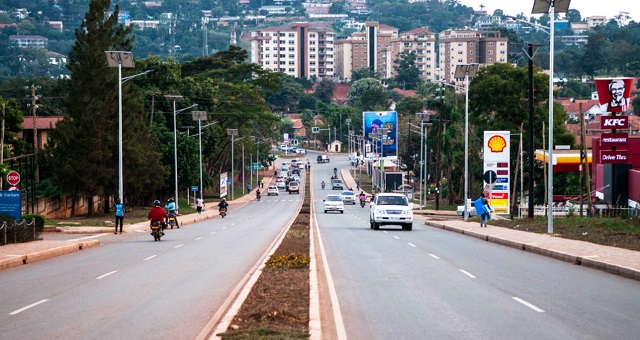
They don’t have to copy hipster trends to prosper
| EMILY HOPKINS | London, New York, Tokyo, Paris and Hong Kong – these famous cities dominate the world economy and are home to millions of people, as well as internationally renowned arts, culture and educational institutions. But they are hardly representative of the rest of the world’s cities. While 54% of the global population lives in cities, around half of those live in cities that have 500,000 inhabitants or fewer.
These “ordinary” cities can be overlooked by politicians, investors, researchers and big businesses. But they are dynamic places with many layers of social, cultural and economic significance. After experiencing a period of post-industrial decline, many such cities are looking to change their fortunes, through urban regeneration programmes.
But that doesn’t mean they have to follow the same path as other urban areas. In fact, my research into urban development has found that ordinary cities can avoid some of the ill-effects of regeneration, by embracing what makes them unique.
The creative city
At the turn of the century, city leaders became increasingly fixated on the idea of the “creative city”, championed by academics-turned-advisers including Richard Florida and Charles Landry. The idea was to encourage a “creative class” of talented workers to make their homes and businesses in cities, by creating urban spaces that are open, inclusive and diverse, as well as attractive and technologically advanced.
“Regeneration” became a buzzword associated with these types of strategies, which seek to repurpose seemingly disused or rundown spaces to support an economy led by creative and technological industries. The apparent success of creative city policies was seen in post-industrial centres such as Detroit, USA, following investments in cultural, artistic and musical urban renewal.
Such policies swiftly became the go-to strategy for seemingly “ordinary” post-industrial cities around the world, even resulting in new rankings that pit cities against each other, based on criteria including entrepreneurship, urban leadership and “liveability”. Having plenty of former industrial spaces that can be adapted for new uses, and a desire to be noticed on the national or global stage, encourages investment in urban regeneration from both public and private sources.
The downsides
Yet regeneration programmes inspired by the creative city agenda can cause problems. Property developers and foreign investors have recognised the economic potential of real estate in “creative” cities. This has led to rocketing land costs, and many low-income residents have felt the effects of being displaced from their homes.
What’s more, creative city policies can lead to similar development techniques being applied to dissimilar places. For example, accusations of “artwashing” are now common in cities across the world, as authorities or developers commission artists and cultural institutions to run creative projects in an area, to help it become more appealing to tourists and young people – sometimes at the expense of those who live there.
But “ordinary” cities can champion their individuality to avoid this fate. Take my home of Coventry, UK, for example: a post-industrial city looking to modernise. Located in the West Midlands, with a population of around 360,000, Coventry will be the third UK City of Culture in 2021 – a title designed to “use culture as a catalyst for economic and social regeneration”.
During my PhD fieldwork there, I’ve investigated how Coventry has drawn on its rich history and culture to resist generic creative city policies. Though the residents I spoke to have not always felt included in regeneration efforts, there is still much to be learned from the city’s approach to urban renewal.
Sent to Coventry
Coventry’s City of Culture bid sought to show how the regeneration programme would be local, personal and inclusive of the city’s diversity. And in some ways, it has been successful. As the home of bands including The Specials and The Selecter, Coventry was a launch pad for the anti-racist, two-tone music scene in the 1980s. The 2Tone taxi project celebrates the ska scene, as well as Coventry’s role in manufacturing London’s iconic black cabs; while touring the city in a taxi, passengers can find out more about the people and places of Coventry, as well as adding their own suggestions for the itinerary.
Another inclusive project which has been part of the lead up to City of Culture 2021 is the Foleshill Mile Map, co-created with local communities to pinpoint the multicultural offerings in one of Coventry’s neighbourhoods. Not only does this champion local input through collaborative working, it also reflects Coventry’s identity as one of the most ethnically diverse cities in the UK.
Yet as more cities seek to emphasise their cultural assets, city leaders and policy makers must be aware of the negative impacts that can arise if local residents are not central to the decision-making process. For example, in Lisbon, Portugal, the arrival of the Time Out Market and LX Factory creative village have increased tourism, leading to anti-gentrification protests and even laws being enforced to avoid displacing long-term residents, as rents continue to rise. This highlights the need to consider local contexts and communities before implementing copycat creative policies.
As witnesses of vast social and cultural change over the past century, Coventrians can offer a new outlook on an often overlooked city, and prove that being “sent to Coventry” need not be a punishment. Culture-led regeneration processes, such as the UK City of Culture title, can offer opportunities to attract investment and increase the civic pride among citizens. And Coventry shows how other “ordinary” cities can approach urban renewal, with local stories and communities at the heart of the process. But authorities and leaders must be careful to maintain this priority throughout the journey – or risk repeating the same mistakes.
****
Emily Hopkins is PhD Researcher, Royal Holloway
CLICK TO READ ONLINE MAGAZINE HERE
 The Independent Uganda: You get the Truth we Pay the Price
The Independent Uganda: You get the Truth we Pay the Price


Cities can be unique when they’re well planned, have good roads, water, industries, development and rich men who can build for city to look nice. if the city has income taxes indirectly and directly it can be developed. where they’ve said they’re going to be cities some has no tarmac roads so how do they going to develop few years?